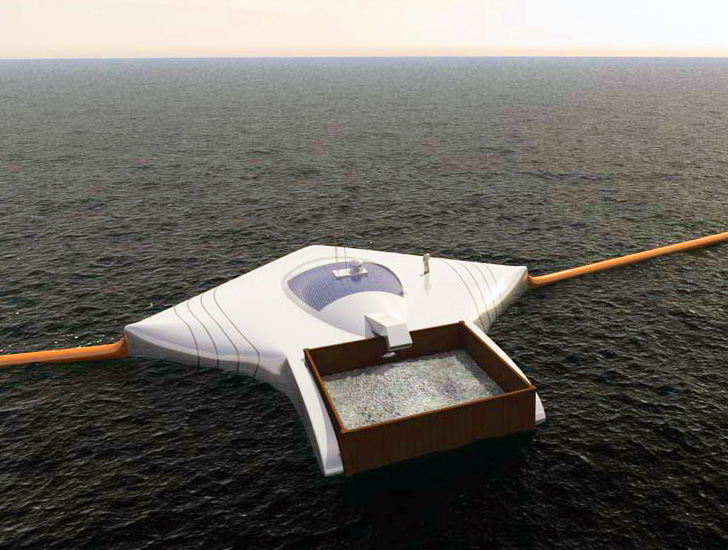The Ocean Cleanup Foundation, an initiative of 20-year-old Boyan Slat has been planning three years for creating an effective ocean cleaning machine. Millions of tons of plastic and non-biodegradable waste eventually finds its way into the seas and accumulates on its surface and floor as well. This causes massive disturbances in the aquatic habitats and food cycles of marine life as well as being an eyesore.
Boyan first presented his ambitious machine in his senior high school year when he was only 17. He thought about the whole thing and decided to do it as a mandatory project at his high school. He was required to spend eighty hours on it but ended up dedicating 500 hours just at that level. He wanted to remove most of the plastics in the ocean surfaces using the natural current movements and their ability to pile it up for him.
He initially presented his project at various forums and won international awards including massive recognition at TEDxDelft in 2012. His continued hard work and appreciation allowed him to announce his own non-profit company in 2014. His concept brought admiration of marine scientists, biologists, and researchers and many of them have helped his company figure out a way to study the patterns of garbage flow. There are five areas around the world where the ocean currents cause huge accumulation of plastics. In this way, you don’t have to clean up the entirety of the huge water bodies and only focus on concentrated areas for an effective cleanup operation.
The machine is named as Ocean Cleanup Array and consists of a processing platform and long floating arms that can cover the range of a moving current. The arms essentially act as huge funnels if long enough to cover the length of a current and direct all the debris to the center where the processing machine stores them in mega units to await further processing. It is a very pro marine life arrangement that probably won’t affect anything, but trash in its path since there are no nets involved and the living things can scatter away from the processing machine.
The accumulation of Zooplankton on the roads was not found to be significant and even if it became significant, an alternative process involving centrifugal force and density differences was introduced. Almost one-third of all trash in the oceans can be removed using this incredibly simple operation. That roughly translates into 7.25 million tons of it. The remaining two-thirds will also eventually find its way to these areas, and most of it can be cleaned later on. We cannot emphasize more on what this will mean for the marine life. We can also start educating the masses and making strict regulations on dumping plastics in the seas. Over time, we can help eradicate the whole menace completely.
A team of fifty engineers, oceanographers, and other experts is working on the project. The project needs skilled manpower in the fields of Plankton Biology and Marine Structures Engineering. It is currently also looking for investment partners for this global cause and to do this a crowdfunding campaign has been launched that has reached 60% funding too. So, it is good sign that in the future when we go swimming on the beach, we will encounter more fishes than dirty plastics!!

